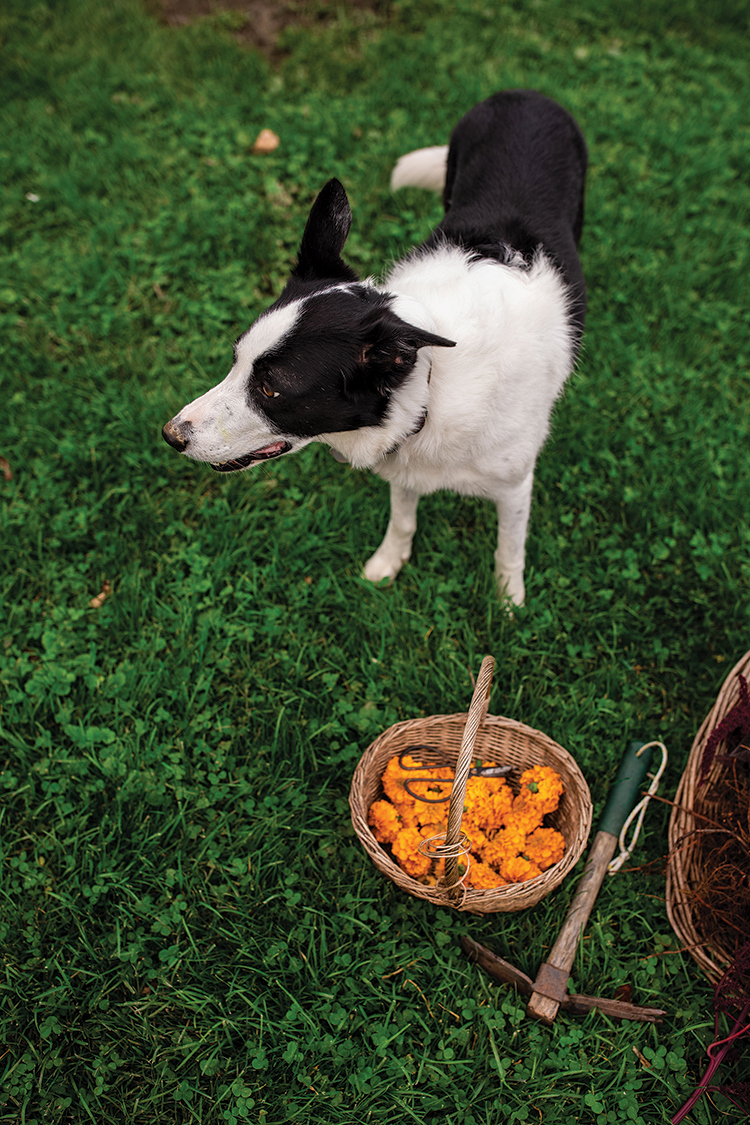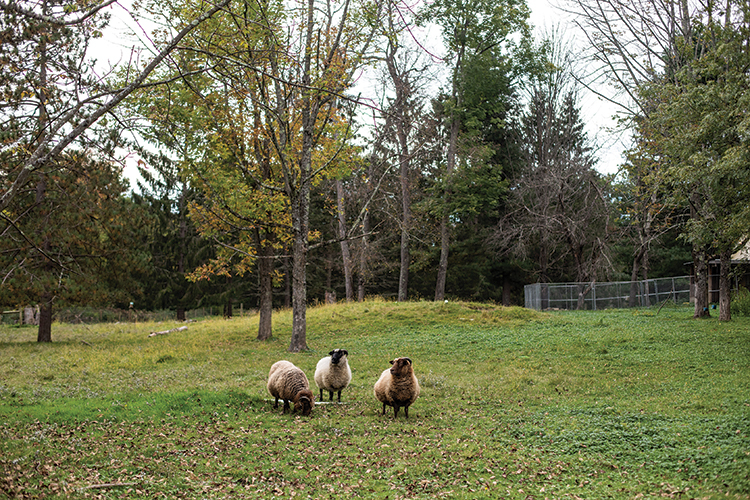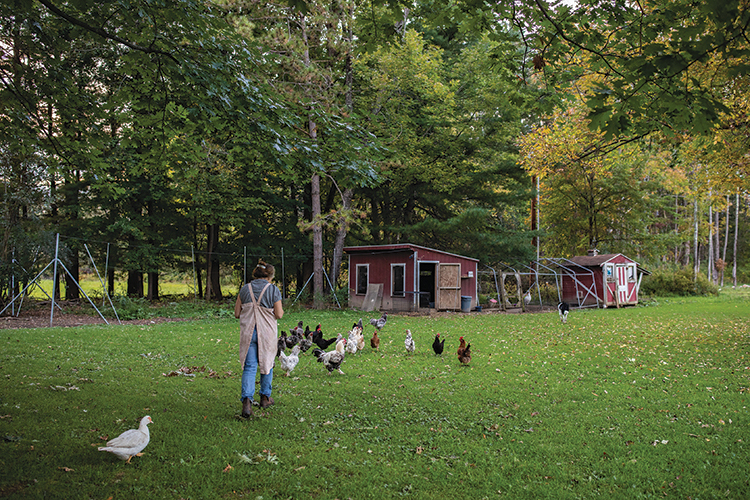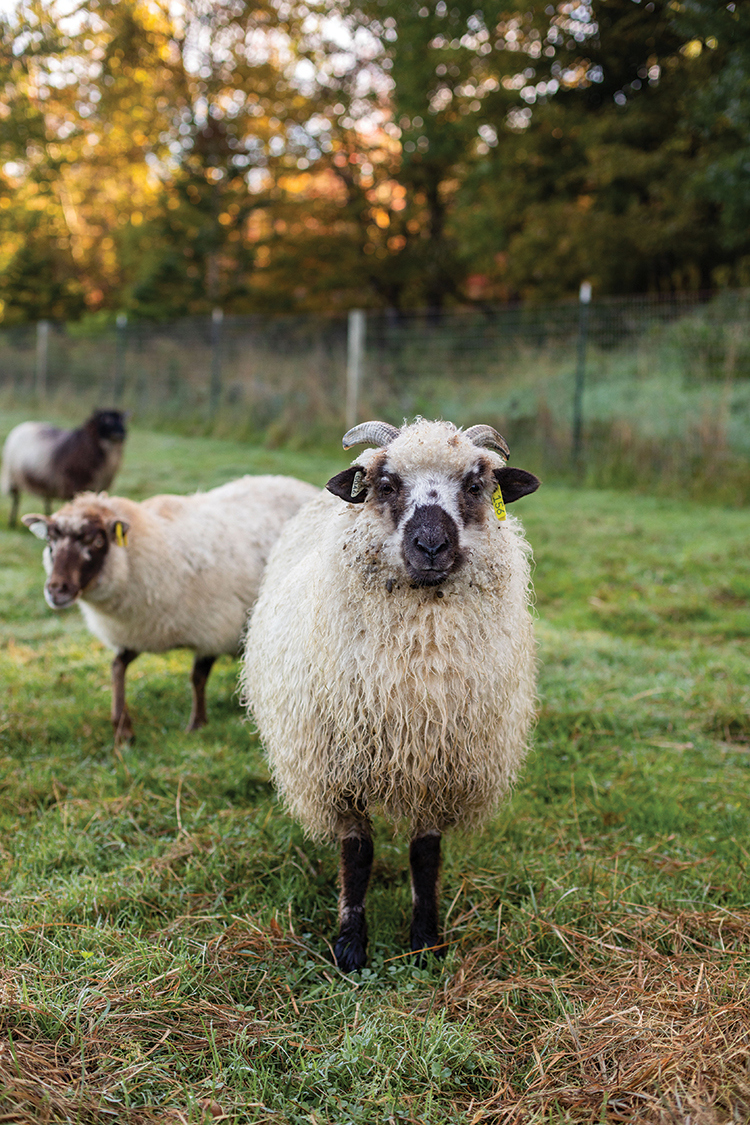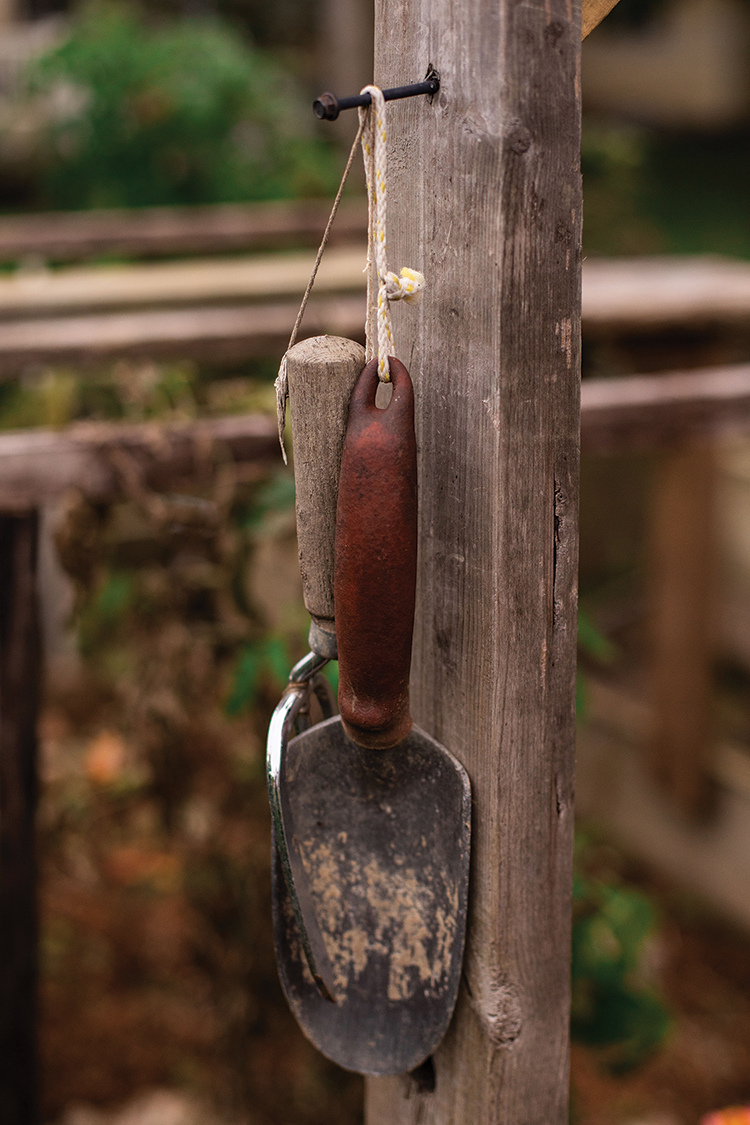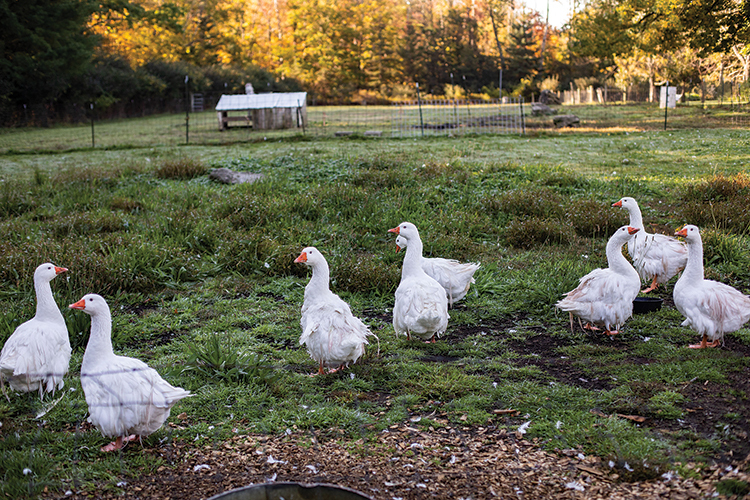There is a farm tucked into a peaceful, verdant acreage in the midst of the south shires of Vermont, between the Hudson River watershed of bordering New York and the aged Green Mountains. Traveling the dirt roads through the small towns leads you to vistas left and right of Grandma Moses country: roly-poly hills, wood clapboard homes, slate rooves, red barns, cow pastures, and old silos. Taking the turn by the brightly painted mailbox with a painted-metal sheep atop, you’ll pull into a pretty place that has been a haven to creatures great and small for over 35 years.
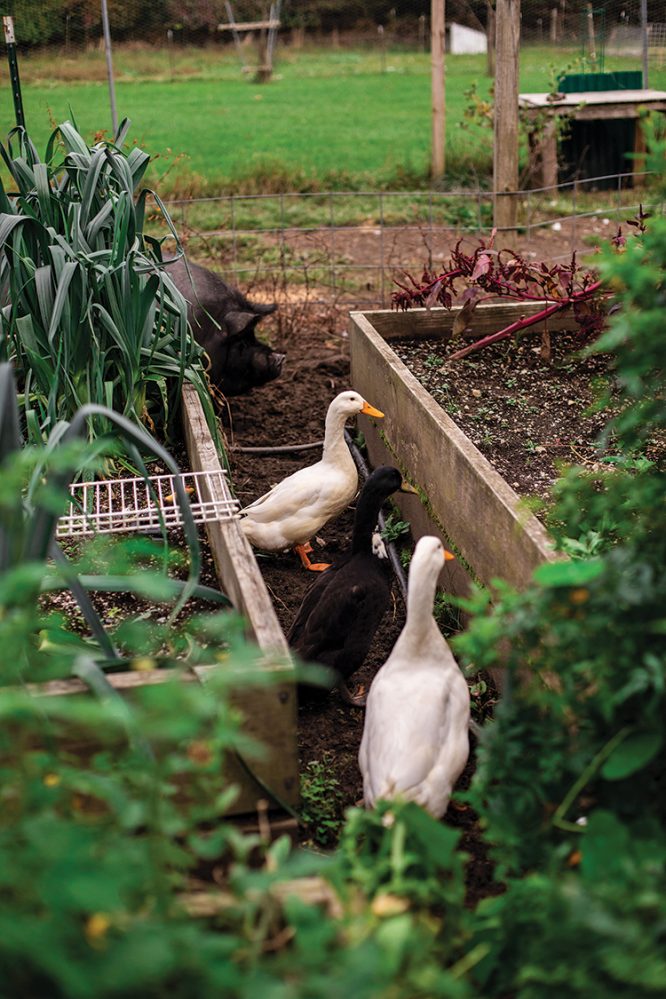
I’ve been raising heritage breed flocks of sheep, poultry, alpacas, goats, piggies, and pups since my own children were youngsters, the first 4 Shetland sheep purchased in 2001. When my kids had grown up and moved on to adult pursuits, instead of downsizing my tiny flocks and homestead practices, I took the knowledge I had gained, along with the developed infrastructure, and turned my hobby into a full-blown production farm.
When I take visitors on walking tours, I can’t seem to give a shortened version of any of the stories surrounding us.
“Here is where Princess Peppermint, the American Guinea hog, lives with her duck friends in our Dye Garden. Oh, have I told you about how she came to us, a small bottle-fed piglet that had a broken jaw? Also, when she was a year old and had pneumonia, and I nursed her with meds and an IV for a week to bring her 107-degree F. temp down to normal … or about that time when she couldn’t get off the front stoop, and we tossed back a couple of craft cocktails to help her loosen up so she wouldn’t be afraid to go down those porch steps to get back to her little hut?”
Now, at about 300 pounds, on short, stocky legs, with her keen snout, she patrols the garden lanes, keeping the weeds at bay and serving as companion to the busy flock of Runner ducks…
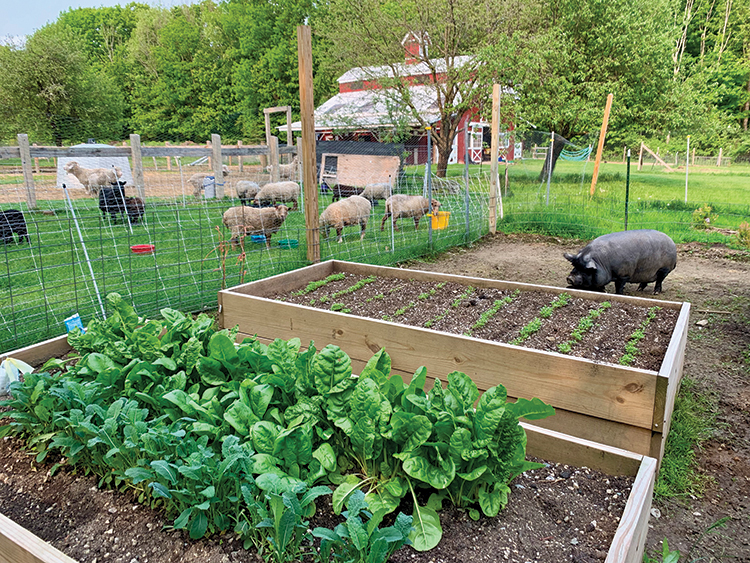
Let’s walk down to the Pond Pasture, where, in the wintertime, we skate on the shoveled pond, warming our hands and toes next to the woodstove in the small shed with 40+ pairs of hanging skates for holiday parties.
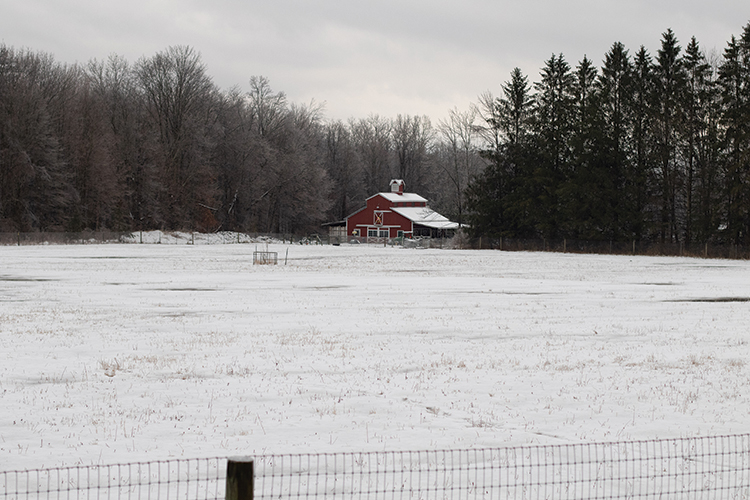
Next, we trek over to The Big Field that borders the through-road for travelers, many who pause, slowing down to look upon our flocks as they graze during the summer months.
The Middle Pasture is closer to the farm house, where the lambs + ma’ams like to graze before weaning in the later summer. The littles like to race around and scramble atop the big rocks, then launch off to race again.
Looking North, you will see the row of trees we’ve planted as memorial sentinels over the years for our beloveds that lay to rest: Poncho, Indy, Hayden, India, Hester, ole Cricket, Ruva, Maggie, Thelma, Louise…
“To make a prairie it
takes a clover and one bee,
One clover, and a bee,
And revery.
The revery alone will do,
If bees are few.” — Emily Dickinson
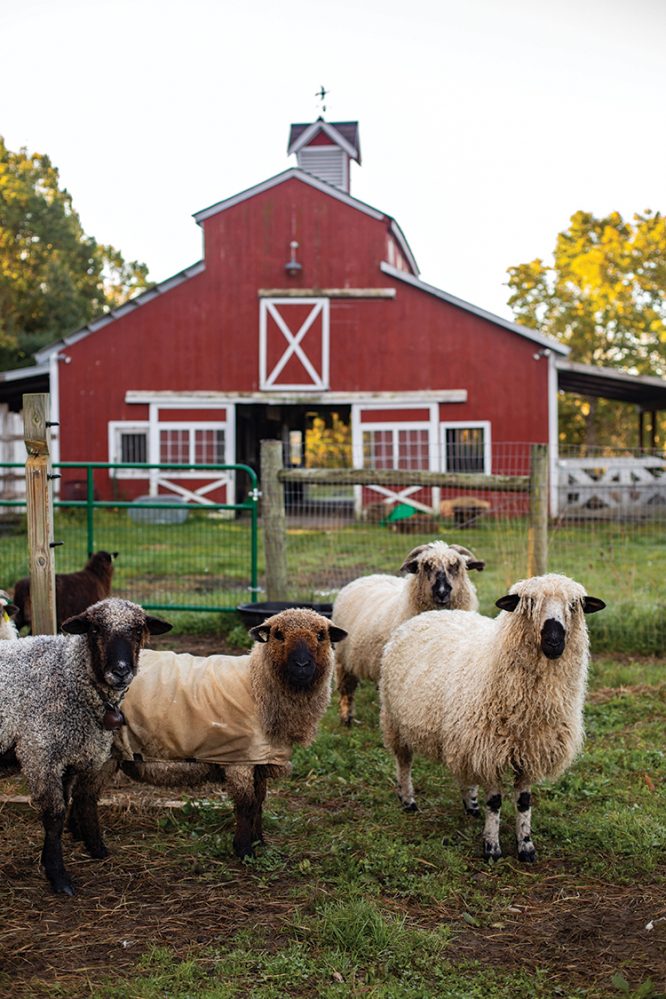
The Barn has been more recently added—in 2008—and it is an ark, a hospital, a hive, a hub for living, for creating, for resting, and for passing on into the next realm. I have ushered in the wee hours of morning in my worn and torn overalls, handspun hats, workgloves, and shirtsleeves to assist ewes in lambing. I’ve knelt on the ground, cradling my senior donkey resting in my lap and comforting him in his last breaths. I have held a ewe in place against the corner of the stall and reached under her to relieve swollen mammary glands and helped latch on her hungry and weak lambs. When you farm, you are responsible to see life in, and you are responsible to see life out. I’ve simply sat on a tipped bucket to think about it all.
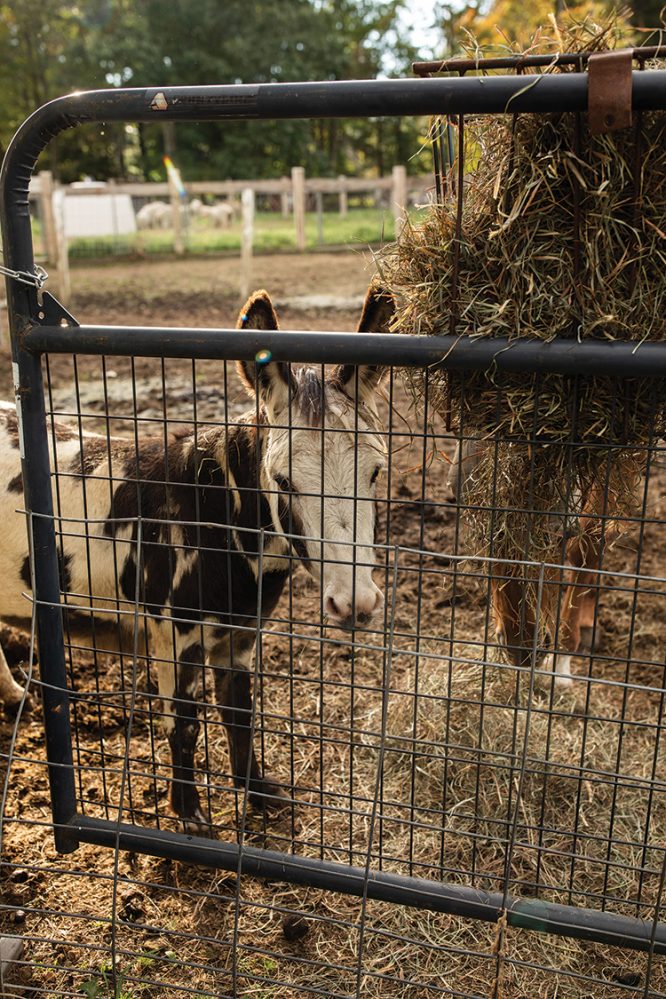
One of my great joys is sharing an educational message. I’ve hosted groups of children and youth for workshops and agricultural-themed visits. I have held events attended by hundreds of visitors for Open Farm Day, Maker Markets, and Maker Retreats. A one-woman band, I run around and post myself at different venues to share the intricacies of how small farms can fix the earth for the better. You might find me at a display in front of the Dye Garden, where I will demonstrate the magic of modifiers and a kettle of Marigold blossoms. I might stand in front of “The Park,” the pasture where there are shady trees and daffodils blooming in the springtime, and preach about how conscientious consumerism will save the environment. I will definitely invite you to settle quietly with the sheep and show you how they like to be petted under the chin, not above, as they are prey animals. We will speak in quieter tones because they will be less frightened than if we are loud or move suddenly. This is where all of the stresses of the day simply dissipate. Time stands still when you sit with the flocks.
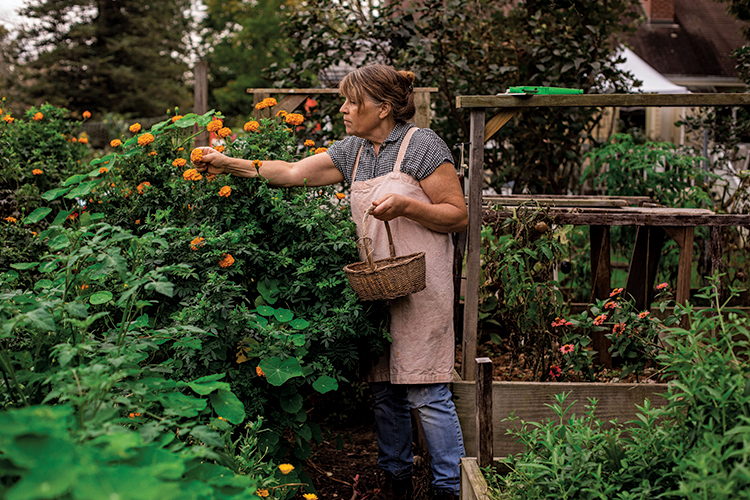
I had always loved to garden and as a child would tend any patch I was given to bring forth blooms or edibles. I loved Sweet Peas and would grow them on a trellis, and rows of Swiss Chard and Courgettes to harvest and cook for lunches. I could put up tomatoes and bake pies with my eyes closed by the time I was 14 with the bit of homesteading knowledge I had from living on my grandparents’ retired dairy farm as a youth. I learned about raising poultry and a pony, some goats and cows. But the sheep, I came to learn about them as an adult, and caring for animals to the extent that I am able to was also something that was self-taught. It became a necessity to make my own decisions and implement procedures with expediency as my location is far removed from livestock veterinary care.
So here I am, in my middle years, surrounded by beautiful animals, growing lush gardens, and I have never been more in love in my whole life. I discovered that farming was all of what I had ever been looking for. It is the way in which I am daily challenged by a variety of elements, or steeped in depths of colors, textures, and designs, how I am fulfilled by the reasonable, gentle nature of the animals I keep, and how I am inspired by such a simple yet complex fiber: Wool.
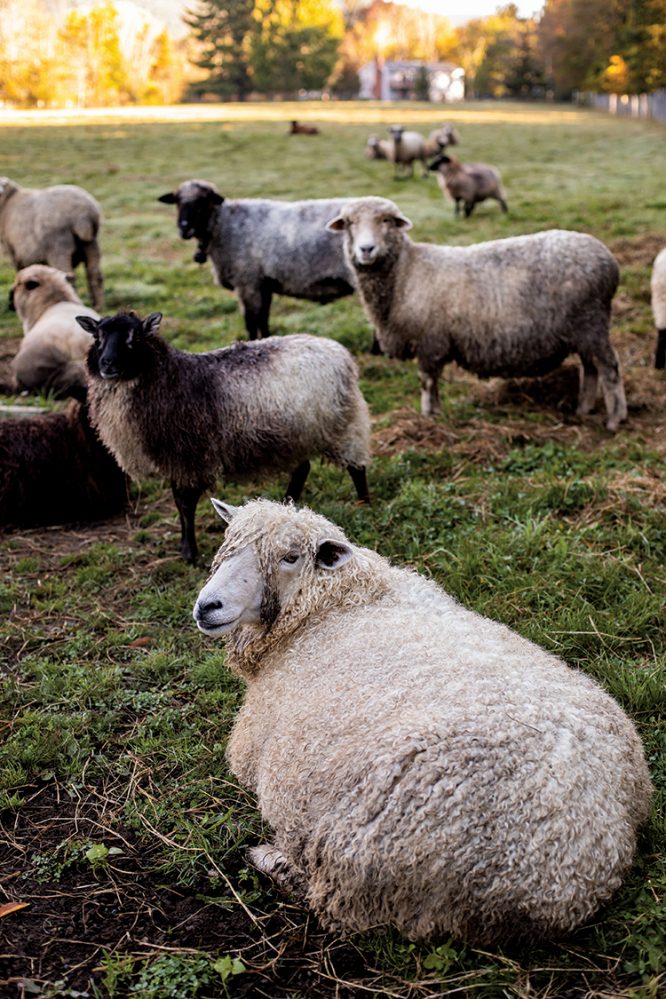
I raise animals that turn grass into wool. Wool is an incredible fiber with properties that run the gamut from thermal regulating, antimicrobial, stain resistant, and flame resistant to having natural UV protection, hypoallergenic, moisture wicking, AND it’s good for the environment.
When I first started to peddle the wool that my flocks grew, I had little knowledge of the processing of fiber and would take my Shetlands’ fleeces to the local mill and let them guide me as to ‘what next.’ The oatmeal or grey shades of blended yarns would come back, and I would wash them, twist them and add a tag, and take them with me to the local farmers’ markets to sell.
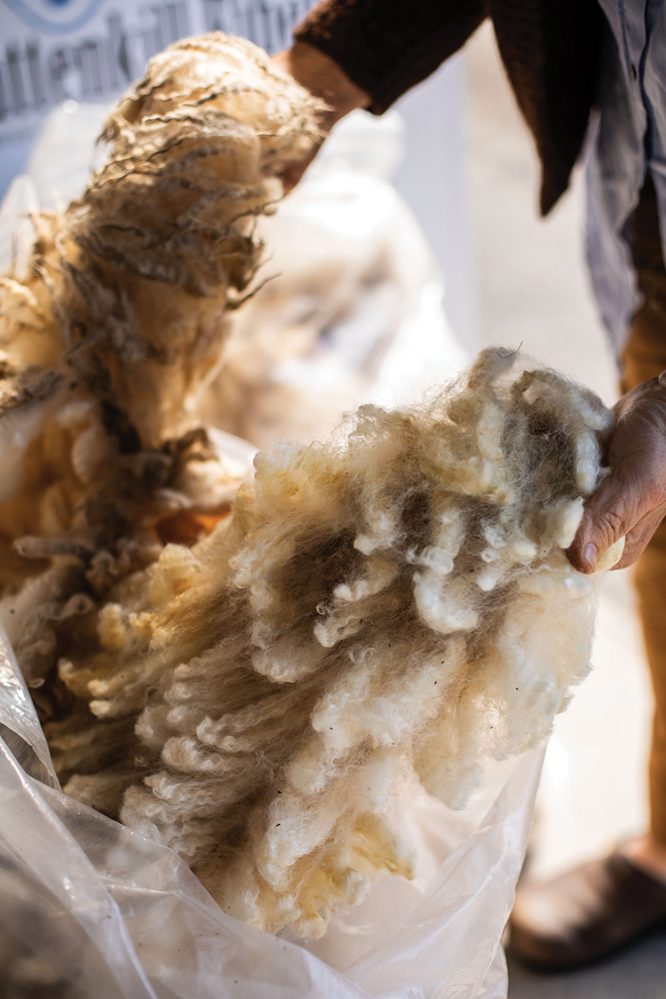
Folks would pick up a twist and look at it, turn it in their hands, and then set it down, replacing the wool with a dozen eggs, a home-baked pie, some veggies, or pickles. We would chat a bit, but there were no knitters shopping during those early years.
Year in, year out, the sheep would need shearing, we would bring their fleeces to the mill, and more yarn was added to the stockpile.
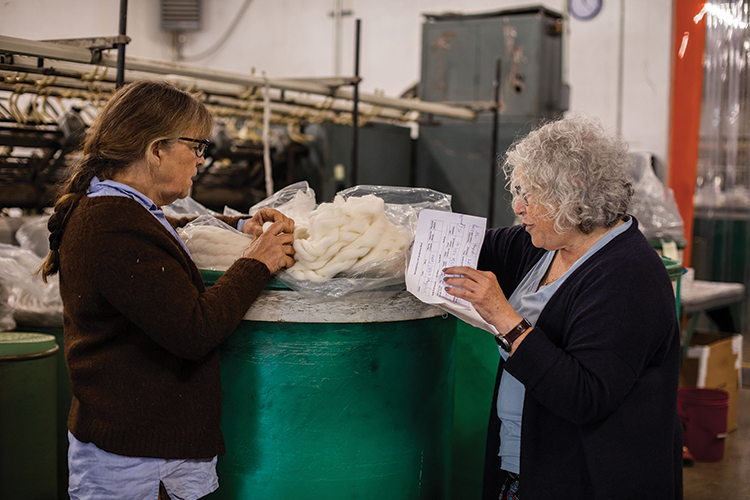
I learned how to dye my yarn using natural materials, and in 2010, I created an online shop to share the farm’s product with a wider audience. Slowly, interest developed in what I was making with my beloved flocks’ fiber and my own hands, and I became more invested in marketing and selling enough to help pay the taxes and overhead in keeping these flocks. It wouldn’t be easy, but I thought that I might be able to make it my full-time occupation if I worked really hard.
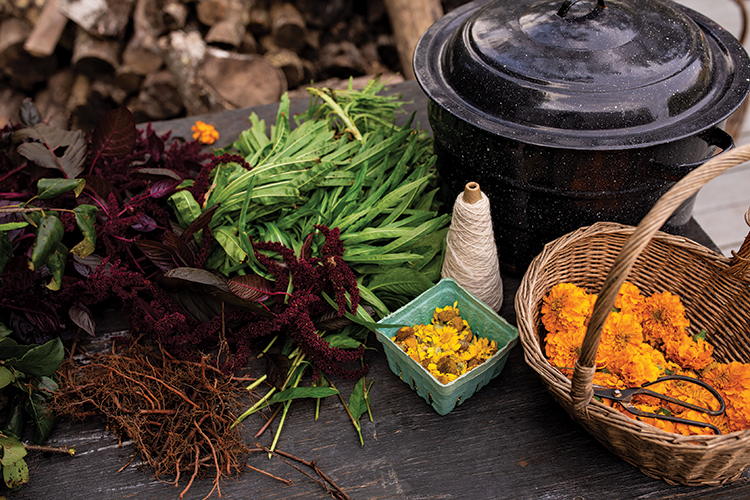
“We don’t inherit the earth from our ancestors, we pass it on to our children.” —Native American proverb
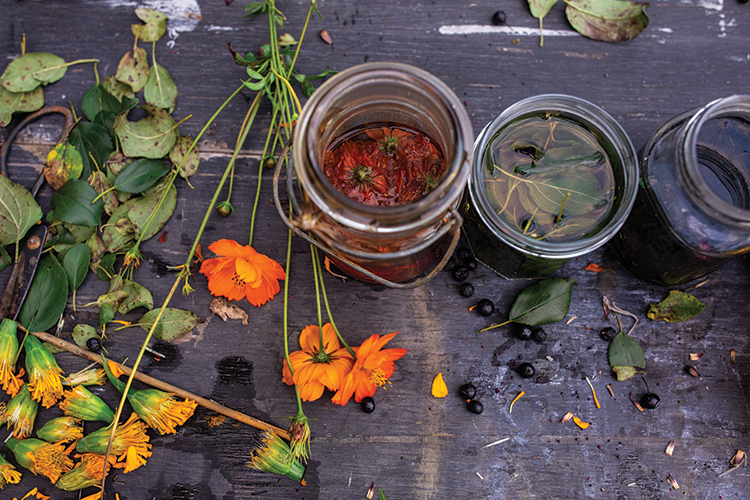
I found that established relationships with local mills went a long way in helping me to become better educated about how to make the best yarns from our many breeds of sheep. Keeping a diverse flock of goats, sheep, and alpacas was most in line with my motivation to support diversity and support rare and heritage breeds, and my bleeding heart, which seemed to find room for any of the rescues that came my way.
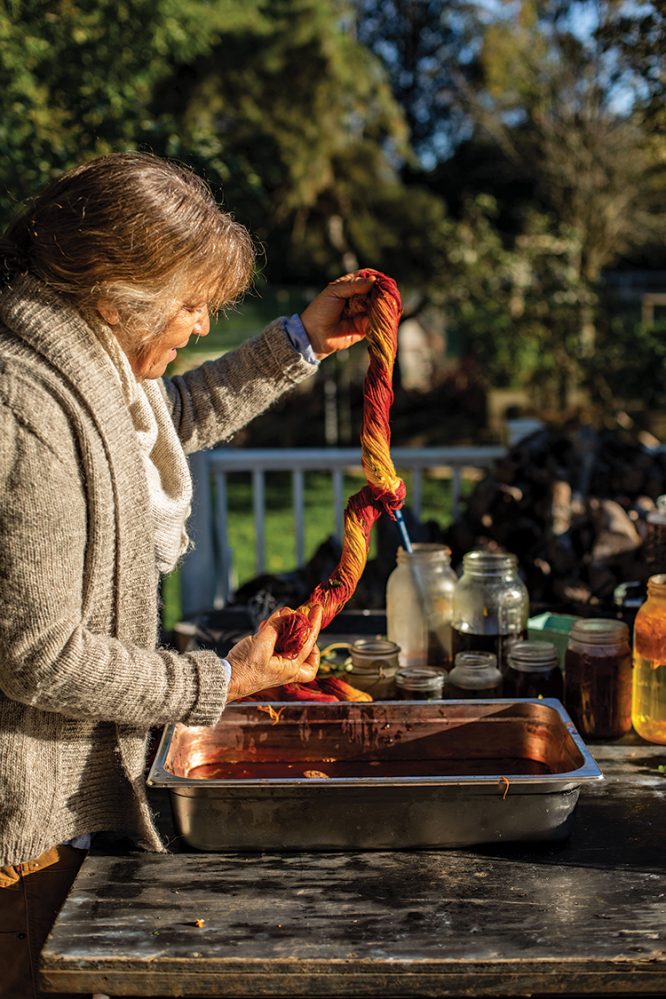
Since my flocks’ fleeces were an atypical harvest, different types of wool and mohair from a variety of different breeds and species, I leaned on the experts at the mills to show me what we could make if we blended this with that or if I saved up my fleeces from several clips to create a user-friendly yarn with more fine wool, and so on.
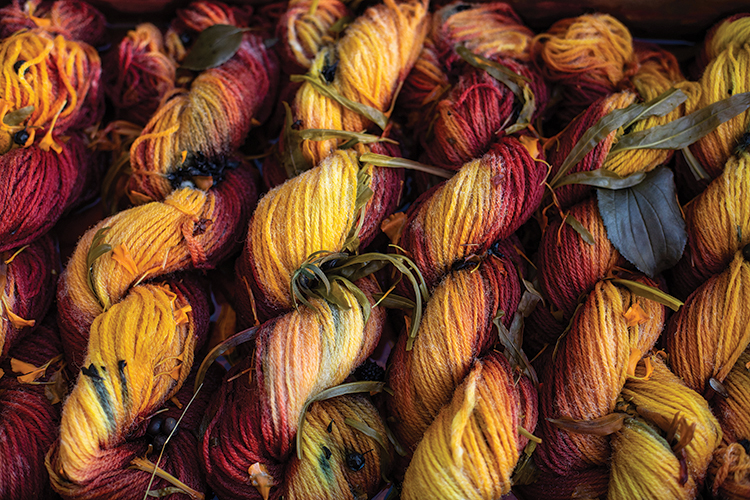
Natural fibers, such as wool, harvested humanely and sustainably from small farms such as mine, will not only help with drawing down carbon from the atmosphere and returning it to the earth but assist in slowing down the fashion industry from its fast-tracking the globe to ruin. Fast fashion and overconsumption are contributors to enormous waste and unethical, inhumane work conditions. Fortunately, reusing, repurposing, and thrifting handmade and conscientiously created garments are enjoying a resurgence on shelves and in catalogs. Making and crafting are helping to educate and support awareness in supporting small businesses and ‘green’ options.
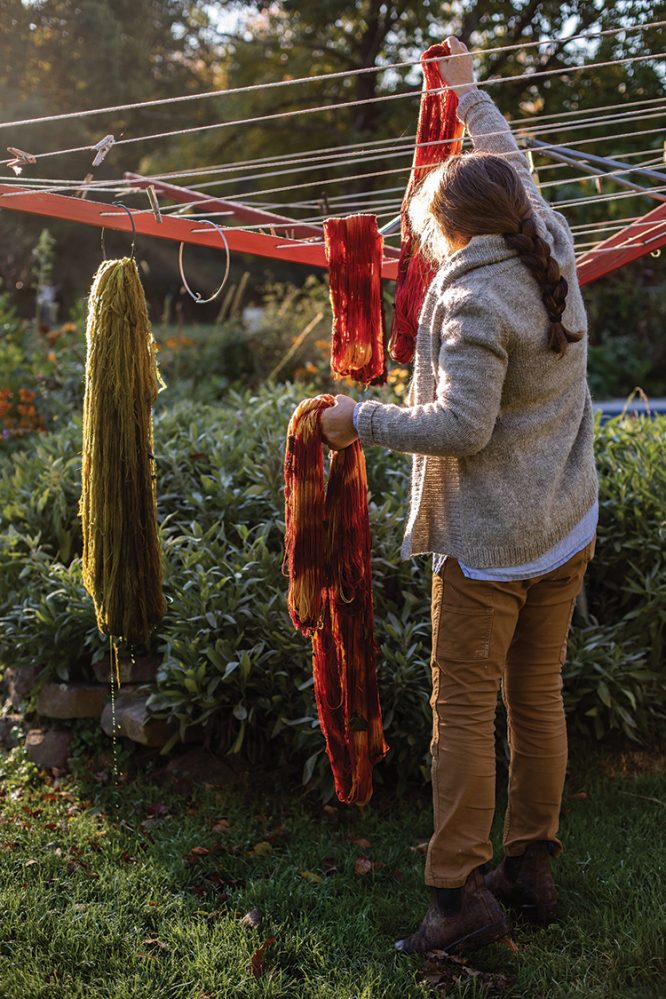
Immersing myself in the agricultural industry and positioning my farm as a supplier in the wool chain was a natural succession, and the learning curve has been gradual enough for me to feel somewhat secure in the business I conduct. This business allows me to, mostly, stay on the farm and explore new designs, colors, and enterprises for putting our small farm’s products in the hands of makers.
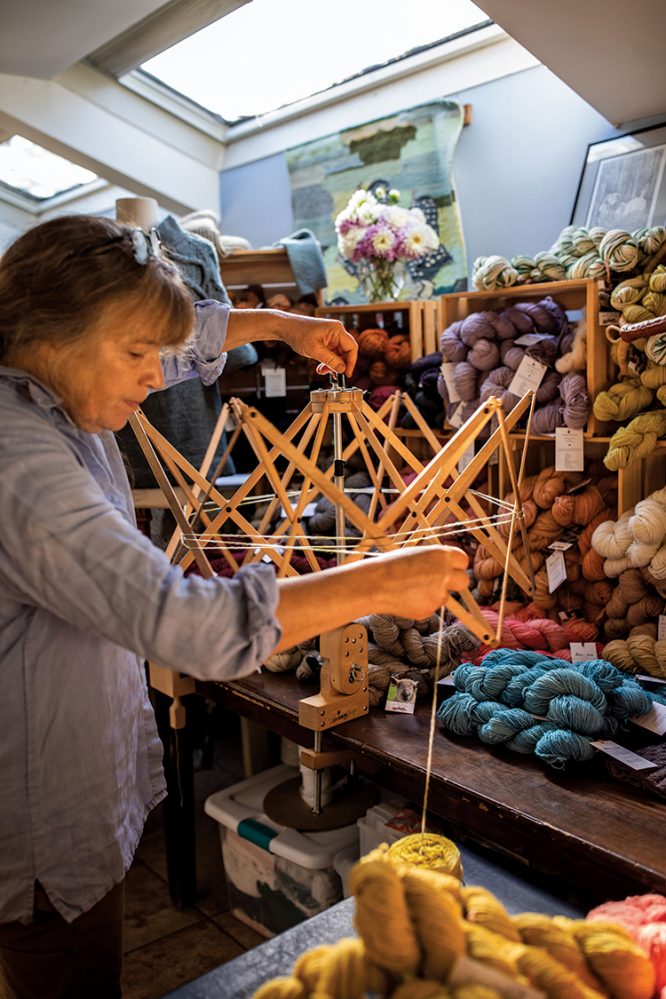
Each pause in our farm-tour will find me talking your ear off and giving you the life story of everyone we meet. I am surrounded by richness—the nourishing of the flocks, the nourishing of the earth, good grasses sequestering carbon and cleaning the atmosphere, raising, harvesting, and processing sustainable fiber. Dyeing with flowers and forage from this place … I share about how it has come to be that I am where I am today—the beginning, the middle, and sometimes the ends. It is a tour about finding what you love and being able to immerse yourself in it, sharing it with the world, knowing that you might be leaving it a little better than when you found it.
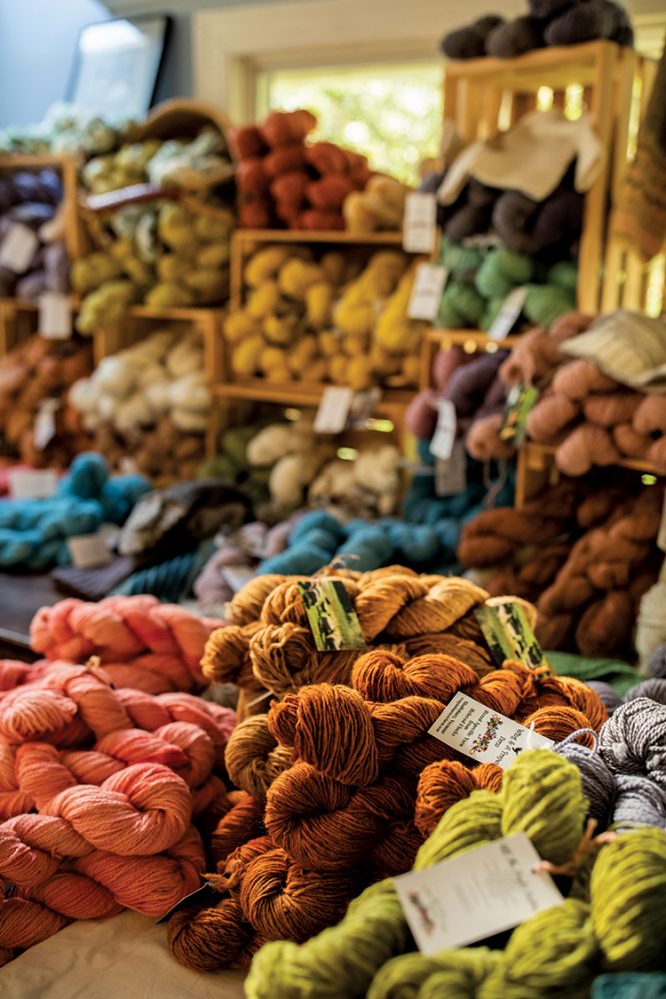
There is a farm tucked into a peaceful, verdant acreage in the midst of the south shires of Vermont, between the Hudson River watershed of bordering New York and the aged Green Mountains. Traveling the dirt roads through the small towns leads you to vistas left and right of Grandma Moses country: roly-poly hills, wood clapboard homes, slate rooves, red barns, cow pastures, and old silos. Taking the turn by the brightly painted mailbox with a painted-metal sheep atop, you’ll pull into a pretty place that has been a haven to creatures great and small for over 35 years.

I’ve been raising heritage breed flocks of sheep, poultry, alpacas, goats, piggies, and pups since my own children were youngsters, the first 4 Shetland sheep purchased in 2001. When my kids had grown up and moved on to adult pursuits, instead of downsizing my tiny flocks and homestead practices, I took the knowledge I had gained, along with the developed infrastructure, and turned my hobby into a full-blown production farm.
When I take visitors on walking tours, I can’t seem to give a shortened version of any of the stories surrounding us.
“Here is where Princess Peppermint, the American Guinea hog, lives with her duck friends in our Dye Garden. Oh, have I told you about how she came to us, a small bottle-fed piglet that had a broken jaw? Also, when she was a year old and had pneumonia, and I nursed her with meds and an IV for a week to bring her 107-degree F. temp down to normal … or about that time when she couldn’t get off the front stoop, and we tossed back a couple of craft cocktails to help her loosen up so she wouldn’t be afraid to go down those porch steps to get back to her little hut?”
Now, at about 300 pounds, on short, stocky legs, with her keen snout, she patrols the garden lanes, keeping the weeds at bay and serving as companion to the busy flock of Runner ducks…

Let’s walk down to the Pond Pasture, where, in the wintertime, we skate on the shoveled pond, warming our hands and toes next to the woodstove in the small shed with 40+ pairs of hanging skates for holiday parties.

Next, we trek over to The Big Field that borders the through-road for travelers, many who pause, slowing down to look upon our flocks as they graze during the summer months.
The Middle Pasture is closer to the farm house, where the lambs + ma’ams like to graze before weaning in the later summer. The littles like to race around and scramble atop the big rocks, then launch off to race again.
Looking North, you will see the row of trees we’ve planted as memorial sentinels over the years for our beloveds that lay to rest: Poncho, Indy, Hayden, India, Hester, ole Cricket, Ruva, Maggie, Thelma, Louise…
“To make a prairie it
takes a clover and one bee,
One clover, and a bee,
And revery.
The revery alone will do,
If bees are few.” — Emily Dickinson

The Barn has been more recently added—in 2008—and it is an ark, a hospital, a hive, a hub for living, for creating, for resting, and for passing on into the next realm. I have ushered in the wee hours of morning in my worn and torn overalls, handspun hats, workgloves, and shirtsleeves to assist ewes in lambing. I’ve knelt on the ground, cradling my senior donkey resting in my lap and comforting him in his last breaths. I have held a ewe in place against the corner of the stall and reached under her to relieve swollen mammary glands and helped latch on her hungry and weak lambs. When you farm, you are responsible to see life in, and you are responsible to see life out. I’ve simply sat on a tipped bucket to think about it all.

One of my great joys is sharing an educational message. I’ve hosted groups of children and youth for workshops and agricultural-themed visits. I have held events attended by hundreds of visitors for Open Farm Day, Maker Markets, and Maker Retreats. A one-woman band, I run around and post myself at different venues to share the intricacies of how small farms can fix the earth for the better. You might find me at a display in front of the Dye Garden, where I will demonstrate the magic of modifiers and a kettle of Marigold blossoms. I might stand in front of “The Park,” the pasture where there are shady trees and daffodils blooming in the springtime, and preach about how conscientious consumerism will save the environment. I will definitely invite you to settle quietly with the sheep and show you how they like to be petted under the chin, not above, as they are prey animals. We will speak in quieter tones because they will be less frightened than if we are loud or move suddenly. This is where all of the stresses of the day simply dissipate. Time stands still when you sit with the flocks.

I had always loved to garden and as a child would tend any patch I was given to bring forth blooms or edibles. I loved Sweet Peas and would grow them on a trellis, and rows of Swiss Chard and Courgettes to harvest and cook for lunches. I could put up tomatoes and bake pies with my eyes closed by the time I was 14 with the bit of homesteading knowledge I had from living on my grandparents’ retired dairy farm as a youth. I learned about raising poultry and a pony, some goats and cows. But the sheep, I came to learn about them as an adult, and caring for animals to the extent that I am able to was also something that was self-taught. It became a necessity to make my own decisions and implement procedures with expediency as my location is far removed from livestock veterinary care.
So here I am, in my middle years, surrounded by beautiful animals, growing lush gardens, and I have never been more in love in my whole life. I discovered that farming was all of what I had ever been looking for. It is the way in which I am daily challenged by a variety of elements, or steeped in depths of colors, textures, and designs, how I am fulfilled by the reasonable, gentle nature of the animals I keep, and how I am inspired by such a simple yet complex fiber: Wool.

I raise animals that turn grass into wool. Wool is an incredible fiber with properties that run the gamut from thermal regulating, antimicrobial, stain resistant, and flame resistant to having natural UV protection, hypoallergenic, moisture wicking, AND it’s good for the environment.
When I first started to peddle the wool that my flocks grew, I had little knowledge of the processing of fiber and would take my Shetlands’ fleeces to the local mill and let them guide me as to ‘what next.’ The oatmeal or grey shades of blended yarns would come back, and I would wash them, twist them and add a tag, and take them with me to the local farmers’ markets to sell.

Folks would pick up a twist and look at it, turn it in their hands, and then set it down, replacing the wool with a dozen eggs, a home-baked pie, some veggies, or pickles. We would chat a bit, but there were no knitters shopping during those early years.
Year in, year out, the sheep would need shearing, we would bring their fleeces to the mill, and more yarn was added to the stockpile.

I learned how to dye my yarn using natural materials, and in 2010, I created an online shop to share the farm’s product with a wider audience. Slowly, interest developed in what I was making with my beloved flocks’ fiber and my own hands, and I became more invested in marketing and selling enough to help pay the taxes and overhead in keeping these flocks. It wouldn’t be easy, but I thought that I might be able to make it my full-time occupation if I worked really hard.

“We don’t inherit the earth from our ancestors, we pass it on to our children.” —Native American proverb

I found that established relationships with local mills went a long way in helping me to become better educated about how to make the best yarns from our many breeds of sheep. Keeping a diverse flock of goats, sheep, and alpacas was most in line with my motivation to support diversity and support rare and heritage breeds, and my bleeding heart, which seemed to find room for any of the rescues that came my way.

Since my flocks’ fleeces were an atypical harvest, different types of wool and mohair from a variety of different breeds and species, I leaned on the experts at the mills to show me what we could make if we blended this with that or if I saved up my fleeces from several clips to create a user-friendly yarn with more fine wool, and so on.

Natural fibers, such as wool, harvested humanely and sustainably from small farms such as mine, will not only help with drawing down carbon from the atmosphere and returning it to the earth but assist in slowing down the fashion industry from its fast-tracking the globe to ruin. Fast fashion and overconsumption are contributors to enormous waste and unethical, inhumane work conditions. Fortunately, reusing, repurposing, and thrifting handmade and conscientiously created garments are enjoying a resurgence on shelves and in catalogs. Making and crafting are helping to educate and support awareness in supporting small businesses and ‘green’ options.

Immersing myself in the agricultural industry and positioning my farm as a supplier in the wool chain was a natural succession, and the learning curve has been gradual enough for me to feel somewhat secure in the business I conduct. This business allows me to, mostly, stay on the farm and explore new designs, colors, and enterprises for putting our small farm’s products in the hands of makers.

Each pause in our farm-tour will find me talking your ear off and giving you the life story of everyone we meet. I am surrounded by richness—the nourishing of the flocks, the nourishing of the earth, good grasses sequestering carbon and cleaning the atmosphere, raising, harvesting, and processing sustainable fiber. Dyeing with flowers and forage from this place … I share about how it has come to be that I am where I am today—the beginning, the middle, and sometimes the ends. It is a tour about finding what you love and being able to immerse yourself in it, sharing it with the world, knowing that you might be leaving it a little better than when you found it.



















